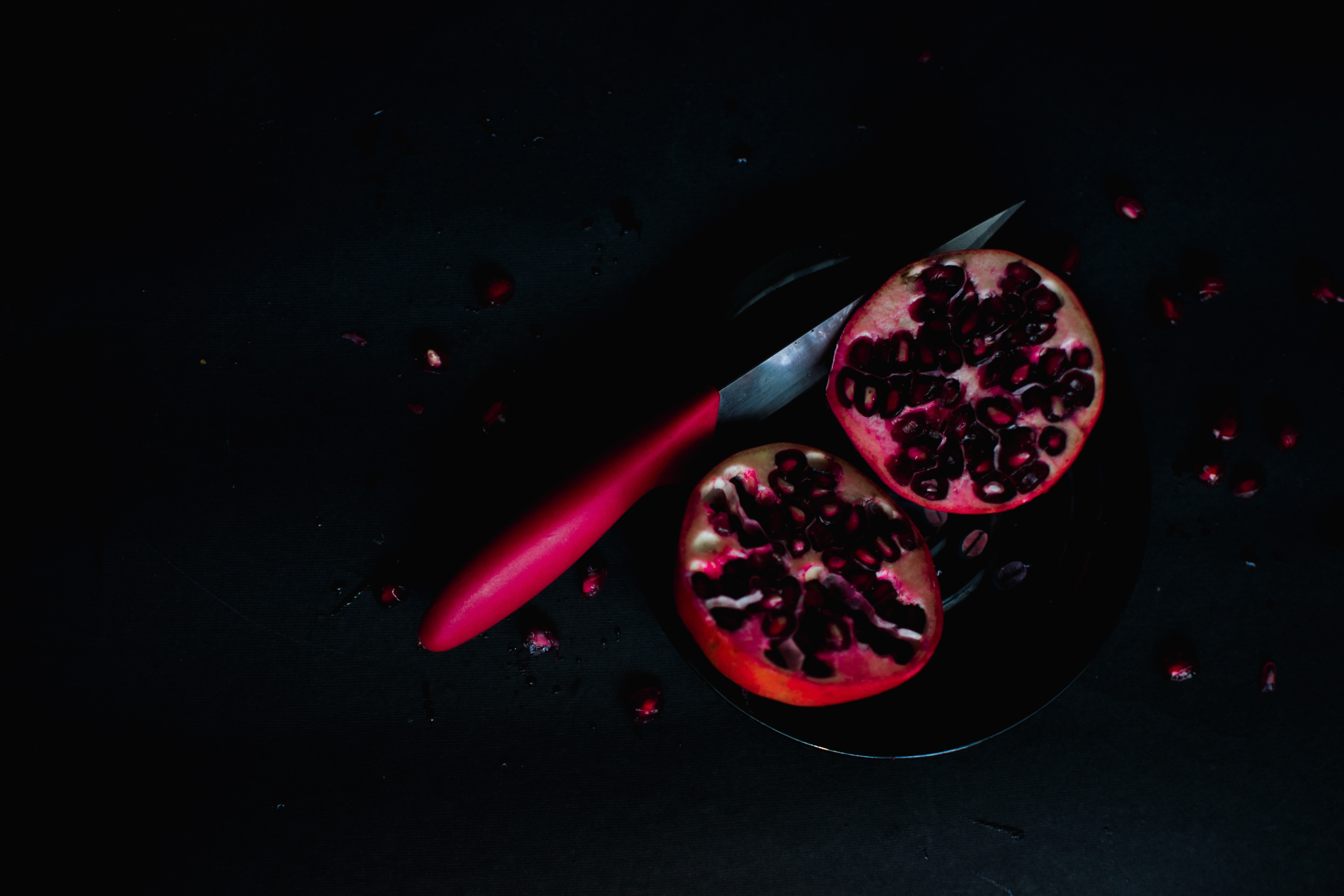
Photo by Pratiksha Mohanty on Unsplash
Filling the Pomegranate Seed by Terry Trowbridge
Peel a garnet stone so thinly
that the skin is a pliable little pouch.
Bleed a fish that swims through Phlegethon.
Mix a drop with attar of unopened rosebud.
Inject the infusion droplet into the pouch.
Surround the pouch with ultrasound imaging wands
from the office of an illicit obstetrician.
Direct all the beams to create an interference pattern
wherein no molecules move at the pouch’s center.
There, where time ceases, will be a frozen seed.
Each seed made this way is unique.
Place the seed inside of a multitude.
Their number is finite but also incomprehensible.
Each pouch will flatten its sides
so that each seed takes a shape opposite of itself:
the pressurized facets of the surrounding crowd.
Each one becomes a coordinate in a galactic orb.
Inside, find a floral zodiac. Chart the vertices where gems meet.
The pomegranate’s persistent calyx
will then be prepared to open,
the pupil of Kingdom Plantae’s eye.